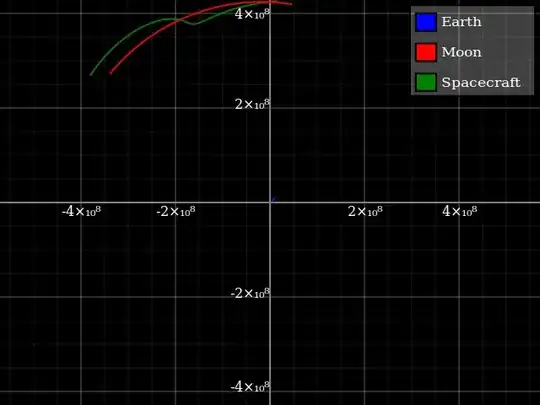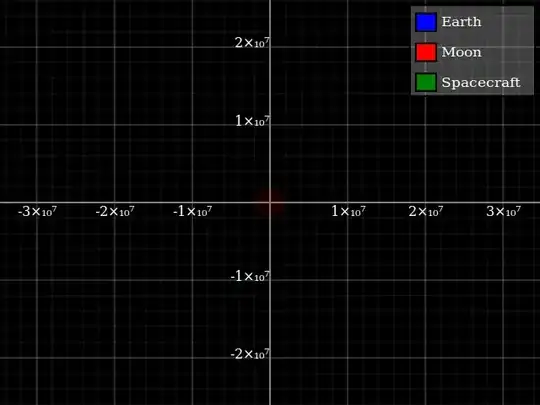It is possible...eventually
To be clear @SilverCookie's answer is correct. In simple Kepler mechanics, when you give a single delta-v to an object there are two 'orbital' possibilities: the orbit returns to where it started, or it is not a closed orbit and your trebuchet payload is above escape velocity.
However, in this specific case, it is very possible for an object to reach lunar escape velocity (2.38 km/s) without getting anywhere close to escape velocity relative to Earth (11.2 km/s). Here is where we have the possibility to establish an orbit with various interactions of our payload with the Earth and the moon.
A trebuchet launch at greater than escape velocity relative to the moon will have at least two vector components relative to Earth: the 2.38 km/s velocity in the direction of the launch ($v_l$), and a ~1.02 km/s velocity in the direction of the moon's motion ($v_m$). The approximation is due to the fact that the moon itself has variable velocity as it pursues its elliptical orbit, in the range (0.970, 1.08) km/s. The final launch velocity $v$, dependent on angle between moon's motion and launch ($\theta$) would be (from the Law of Cosines):
$$ v = \sqrt{v_l^2 + v_m^2 + 2v_l v_m \cos\theta}$$
The codomain of this function, given the values above, is (1.36, 3.40) km/s. The minimum and maximum are found with launch angles of $\pi$ (directly away from the moon's motion for the minimum) and 0 (directly in line with the moon's motion for maximum). Note that this all involves only orbits in a 2-D plane.
The launch angle will in turn be the orbital angle of the object; so long as its orbit is prograde (in the same direction of the moon). If the launch angle is retrograde, you subtract $pi$. If the maximum speed is chosen, the angle is 0, which is the angle at perihelion. If the minimum speed is selected, launch angle is $pi$, but the orbit is retrograde so orbital angle is again 0; the object is still at perihelion. The angular velocity of the launched object is $$\omega = \frac{v\cos(\theta)}{r}$$ The minimum possible angular velocity is 0, the max is $8.85\times10^{-6}$.
Now we can use Kepler's equations to get some ideas of how to get back into a lunar orbit using the Earth.
Use the Earth's atmosphere to drop your velocity.
Since we have seen that it is possible to have zero angular velocity relative to the Earth, then there must be possible launch trajectories that intercept the Earth. If so, then it is possible to get one that brushes the Earth's atmosphere.
Use the Earth's atmosphere over a series of orbits to bleed off kinetic energy from our launched object. Once the object has lost enough energy, its velocity at the distance of the moon's orbit will be reduced to below the Moon' escape velocity. If the object then approaches within the Moon's Hill Sphere (about 60,000 km), it will start orbiting the Moon instead of the Earth.
Mission accomplished. I will admit that there is probably a lot of trial and error and lost payloads involved, but it is possible and that's all that matters.

